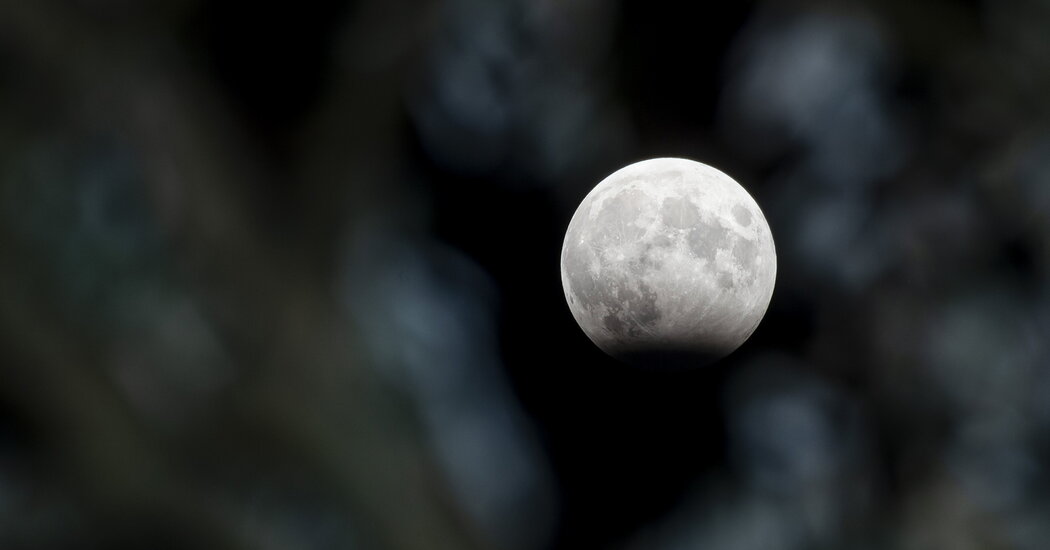As the moon prepares to blot out the surface of our sun in two weeks, it’s warming up with a penumbral lunar eclipse on Sunday night or Monday morning, depending on your time zone.
In general, eclipses are the result of a delicate dance between the moon, the sun and the Earth. Lunar eclipses occur when the planet slides between the sun and the moon. That’s in contrast to a solar eclipse, which happens when the moon interjects between the other two bodies.
“It’s all about shadows,” said Noah Petro, a planetary geologist who works on the Lunar Reconnaissance Orbiter for NASA. The sun beams light on Earth, casting a long shadow behind it.
“And every once in a while, the moon wanders into that shadow,” Dr. Petro said.
In the most dramatic version of the event, the darkest part of Earth’s shadow washes over the lunar surface, making it shine crimson. This is a total lunar eclipse, also known as a blood moon.
But you won’t see that happen overnight. At 12:53 a.m. Eastern time on Monday, the moon will start to pass through only the outermost part of Earth’s shadow, known as the penumbra. As a result, its full face will slightly dim.
Is that worth trying to see? Dr. Petro thinks so. But the change will be difficult to catch with the naked eye, so he encourages using binoculars or a telescope, and taking note of how the moon’s brightness changes through the night.
Lunar eclipses happen slowly over several hours, Dr. Petro said, so “if you only go out once to look at it, you may not even notice that it’s happening.”
Unlike their solar counterparts, lunar eclipses can be viewed by everyone on the nightside of Earth. According to Dr. Petro, the reason for this difference has to do with the varying sizes of the celestial bodies.
Because Earth is so much bigger than the moon, its shadow is large enough to envelop the entire lunar surface — an effect that tonight will be visible to people across much of the Americas. Skywatchers in the western half of Africa, and in eastern parts of Asia and Australia, might also see some of the eclipse.
The moon, on the other hand, is much smaller than our planet. So during a solar eclipse, it plunges only a narrow path on Earth’s surface into darkness.
Different though they are, the two celestial events are related. Both have to do with the alignment of the moon, Earth and sun, but in different orientations. Lunar and solar eclipses always occur in pairs, two weeks apart — the amount of time it takes for the moon to move from one side of Earth to the other.
“The moon is this dance partner that we’ve now had for four and a half billion years,” Dr. Petro said, adding that both kinds of eclipses should remind us of the importance of our cosmic companion.
“We are part of a system,” Dr. Petro said. “Eclipses are great reminders that we are not alone in space.”

